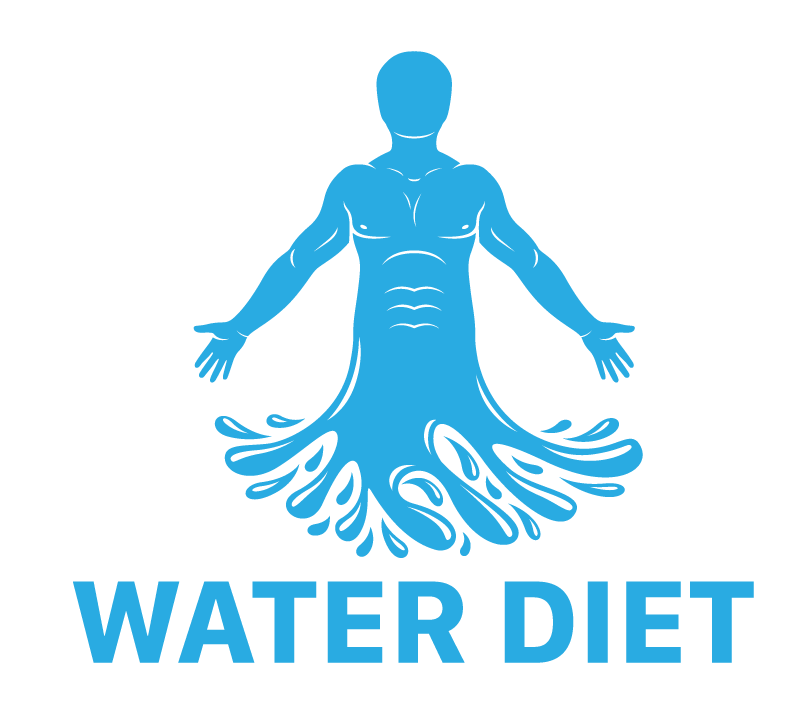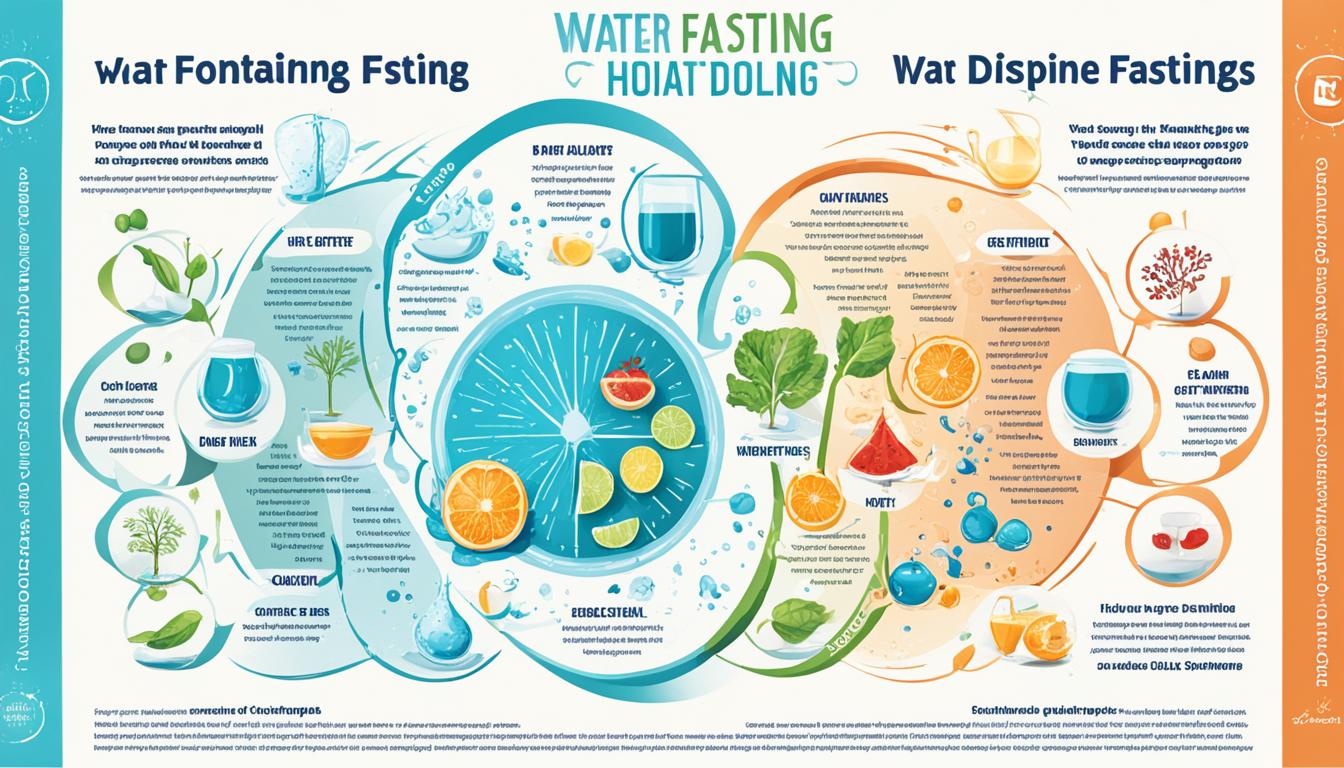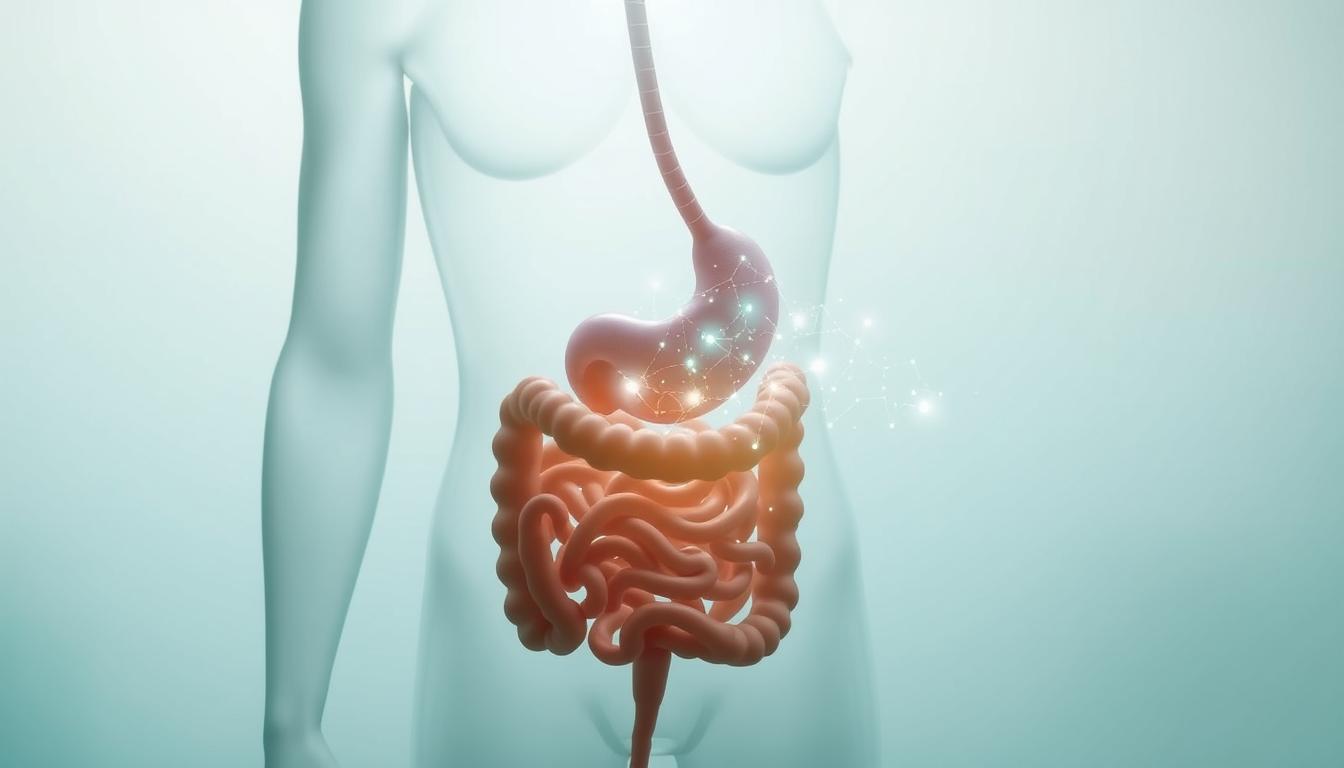Exploring the world of fasting reveals two compelling methods: water fasting and dry fasting. Each practice carries its unique set of health implications, often drawing individuals keen on understanding the difference between water fasting and dry fasting. The health-conscious audience is increasingly inclined to weigh the water fasting benefits against the dry fasting benefits, searching for the optimal techniques to enhance their health and maneuver the journey towards well-being.
As these fasting modalities gain traction, it becomes crucial for seekers of wellness to make informed decisions. Does one opt for the hydration allowance of water fasting, or the total abstinence that dry fasting endorses? This guide illuminates the key elements and nuances of both, enabling a mindful choice that aligns with one’s health objectives.
Key Takeaways
- Distinguishing water fasting vs dry fasting provides clarity for personal health choices.
- Both fasting methods propose unique avenues for achieving a healthier body weight and well-being.
- Understanding the water fasting benefits includes recognizing hydration’s role in a fasting regimen.
- Dry fasting benefits often relate to the heightened restriction and its impact on health.
- Insights into the difference between water fasting and dry fasting can help in avoiding negative side effects.
The Promising Health Benefits of Fasting
Fasting has long been recognized not just as a tool for water fasting for weight loss but as a holistic practice with a spectrum of health benefits that extend well beyond the scale. Individuals seeking to enhance their wellbeing are now turning to fasting, not just for its efficacy in weight management but also for its profound impact on overall health.
Why Fasting is More Than Just Weight Loss
It’s a common misconception that the primary benefit of fasting, particularly water fasting, is weight loss. In reality, the advantages are far-reaching and impact various bodily functions. Fasting initiates a complex process of internal rejuvenation, tapping into the body’s innate healing mechanisms to improve resistance to stress and bolster the immune system.
The Role of Autophagy in Fasting
One of the most celebrated fasting benefits is autophagy, a process where the body purges damaged cells, facilitating regeneration and repair. This natural, self-cleaning mechanism is pivotal in maintaining homeostasis and promoting longevity. It involves proteins involved in metabolic processes and aids in the production of enzymes critical for every function in the body.
Brain Cell Regeneration and Cognitive Improvements
Fasting has been linked to improvements in cognitive function, as it encourages the regeneration of brain cells, which in turn enhances memory and mental clarity. This neurological renaissance, spurred by the fasting-induced state of ketosis, mirrors the body’s ability to rejuvenate at a cellular level. The impact on brain health is a testament to the comprehensive nature of fasting benefits in the realm of personal health and wellness.
An Overview of Dry Fasting and Its Unique Approach
Dry fasting, a practice that involves abstaining from all food and water, has its own set of parameters and potential benefits, stirring interest in the wellness community. This ancient tradition, embedded within various cultures and religious practices, has resurfaced with a modern twist, as more individuals explore the implications of this intense method. Diving into the depths of dry fasting uncovers two main types—hard dry fasting and soft dry fasting—each with its particular rules and proposed advantages.
Differentiating Hard Dry Fasting and Soft Dry Fasting
In the context of dry fasting benefits, it’s crucial to distinguish between the more austere hard dry fasting and the slightly lenient soft dry fasting. The former disallows any contact with water, not just ingestion. From dawn till dusk, those who commit to a hard dry fasting regimen do not eat, drink, nor come into contact with water externally. Conversely, soft dry fasting permits the use of water for hygiene, offering a more approachable option to those who seek the virtues of fasting without the more rigid constraints of its hard counterpart.
Ramadan Fasting: A Religious Perspective on Dry Fasting
Ramadan fasting, an annual observance by Muslims worldwide, stands as a prime example of soft dry fasting. It’s not simply a religious obligation but also a time for self-reflection and spiritual growth. From pre-dawn to sunset, practitioners abstain from all forms of food and drink, including water. Studies have observed Ramadan fasting’s health benefits, such as improved immune function and stress resistance—vividly reflecting the dry fasting benefits many seek. It also puts a spotlight on the holistic approach to wellbeing, intertwining the physical with the spiritual.
Considering the human body’s resilience and adaptive capabilities, dry fasting represents a method of detox and cognitive enhancement. Its advocates often point to a heightened sense of mental clarity and a physically felt reduction in inflammation as some of the perks. However, the intensity of the dry fasting methodology necessitates caution. To glean the rewards without undue strain on the body, it is recommended to observe dry fasting within manageable timeframes, thereby deriving the positive aspects of this physiological challenge.
Below is a table outlining the characteristics and considerations of both hard and soft dry fasting:
| Type of Dry Fasting | Contact with Water | Duration | Common Practices | Health Considerations |
|---|---|---|---|---|
| Hard Dry Fasting | No external or internal contact | Short periods (less than 24 hours) | Avoidance of all water contact | Increased stress on the body; not recommended for extended durations |
| Soft Dry Fasting | Allowed for hygiene purposes | Sunrise to sunset (like during Ramadan) | Fasting during daylight hours, no food or water intake | Balance between spirituality and health; ideal for beginners |
*While the table compares hard and soft dry fasting, individuals interested in this practice should seek professional advice to tailor the fast to their personal health needs and circumstances.
Introduction to Water Fasting and Its Features
Embarking on a water fasting journey, it is essential to grasp the full spectrum of what this practice entails and the water fasting results one might anticipate. Unlike dry fasting, water fasting is a ritual of nourishment through abstinence, where one consumes nothing but water—eschewing food, coffee, tea, and even supplements. This unique dietary void heralds numerous water fasting benefits, comparable in many respects to those of dry fasting, though distinct in its requirements and potential outcomes.
The allure of water fasting lies in the promise of not just weight management but also deeper cleansing and bodily restoration. Engaging in this practice sets one on a path toward a renewed physiological state, potentially triggering enhanced cellular processes and a profound sense of wellness. The clarity and vitality that practitioners often report underscore the transformative potential of water fasting.
However, embarking on this journey without adequate preparation can lead to unexpected encounters with mineral deficiencies during fasting. The absence of food-origin minerals can precipitate a subtle yet significant imbalance, provoking symptoms ranging from mild discomfort to serious health concerns. Thus, the importance of mindful mineral and vitamin replenishment cannot be overstated, as the body’s requirements don’t pause, even amid the fasting state.
The essence of water fasting pivots on the intention to cleanse and rejuvenate, yet it’s equally a process of discovery—understanding the body’s calls for hydration and mineral balance, and responding with attuned self-care.
- Water fasts encourage lengthy fasting periods due to ease of water intake.
- Observing mineral intake is crucial to circumvent mineral deficiencies during fasting.
- Comprehensive hydration aids in managing the risks associated with nutrient depletion.
In the tableau of dietary practices, water fasting stands out with its serene simplicity, yet underscores the necessity of respecting the body’s intricate nutrition mosaic. A tapestry woven from threads of persistence and attunement; it invites an intimate dialogue with the subtle cravings of our cells, heeding their whispers for sustenance.
Replenishment during water fasting is not about food; it’s about the minerals dissolved in the life-giving fluid—minerals that forge the unseen backbone of our well-being. The journey of water fasting is thus a balance of emptiness and enrichment, one where the clear liquid plays the dual role of purifier and provider. To delve into water fasting is to navigate a voyage of internal contrasts—embracing the void while enshrining hydration as the safeguard against the shadows of deficiency.
Water Fasting vs Dry Fasting: Analyzing the Differences
Understanding the difference between water fasting and dry fasting is essential for those considering fasting as a means to improve their health. Water fasting allows individuals to maintain hydration and sustain longer periods of fasting, which is appealing for those interested in detoxification and potential health improvement without severe deprivation. On the other hand, dry fasting for detox poses a stricter regimen, possibly leading to a more intense detoxification process, albeit with increased risks.
Advocates for dry fasting often claim that the method can enhance the body’s detoxification processes, potentially leading to enhanced stem cell production. Despite this, it’s critical to recognize that dry fasting can be more dangerous because of the stress it places on the body, including risks of dehydration and nutrient deficiencies.

While water fasting is generally considered safer, it is not without its requirements and potential pitfalls. Electrolyte balance is a major consideration during water fasting, as the absence of food intake means that minerals are not being replenished through diet. Therefore, individuals undertaking a water fast must be vigilant about managing their electrolyte levels to avoid imbalances that can lead to health complications.
Whether one chooses water fasting or dry fasting, it is crucial to plan carefully and consider personal health needs and goals. While both methods can offer significant health benefits, they must be approached with a due understanding of the associated risks.
- Water fasting typically has a safety advantage due to hydration allowance, requiring mindful mineral management.
- Dry fasting may achieve rapid results but also incurs more risks due to total food and water abstinence.
- Electrolyte management is essential for safe water fasting to prevent deficiencies and maintain health.
In the comparison of these fasting methodologies, here’s a brief overview of their differences:
| Fasting Type | Hydration Status | Rapid Detox Potential | Risks Involved | Considerations for Safety |
|---|---|---|---|---|
| Water Fasting | Maintained | Moderate | Electrolyte imbalance | Monitor and supplement electrolytes |
| Dry Fasting | Compromised | Higher | Dehydration, nutrient deficiencies | Limited duration, heightened caution |
Fasting, in any form, should be considered a significant undertaking—and one not without complications if not conducted judiciously. While dry fasting might offer expedited results, it’s imperative to weigh these against the potential dangers and opt for a method that is sustainable, safe, and suited to one’s individual health status and goals.
The Flip Side: Recognizing the Dangers of Dry and Water Fasting
Fasting is often touted for its health benefits and potential to revolutionize personal wellness. However, it’s critical to understand that for all its purported effects, it comes with inherent risks. When examining dry fasting dangers and water fasting risks, it becomes evident that the practice isn’t free of potential harm, particularly when it involves prolonged periods.
One of the most significant concerns related to dry and water fasting is the onset of mineral deficiencies. The delicate balance of our body’s electrolytes and minerals is essential for normal function. Fasting, especially without proper preparation or supplementation, can disrupt this balance, leading to unpleasant and even dangerous side effects.
Be aware that prolonged fasting effects may extend beyond temporary discomfort. The body’s response to significant nutrient deprivation can include weakness, severe digestive issues, and even a susceptibility to fainting—symptoms that can escalate rapidly if the body’s nutritional needs are not appropriately addressed beforehand.
Compounding these risks is the potential for more severe complications, such as ketoacidosis—a consequence of unchecked ketone production—and heart issues that can emerge due to electrolyte imbalances. The stakes are high, with incidents of heart attacks and, in extreme cases, fatalities reported among those undertaking radical fasting regimens without due caution and supervision.
The safest approach to fasting incorporates a gradual entry into the fast accompanied by a period of healthy eating and regular exercise pre-fast. This method ensures that the body’s mineral stores are adequate and that the transition into a state of fasting is as smooth as possible.
Safe fasting is not an impulsive plunge but a measured descent, navigated with foresight and respect for the body’s limits and needs.
To encapsulate the risks, the table below contrasts the safety concerns associated with both dry and water fasting:
| Risk | Dry Fasting | Water Fasting |
|---|---|---|
| Dehydration | High | Low (with adequate water intake) |
| Mineral Deficiencies | High (due to absence of all intake) | Medium (potential without supplementation) |
| Weakness/Fatigue | Common | Less common (varies with individual) |
| Severe Complications (e.g., ketoacidosis, heart issues) | Possible with prolonged fasting | Possible but less likely, especially with controlled electrolyte management |
In conclusion, while fasting’s health benefits can be enticing, it is imperative to approach the practice with knowledge of and guard against the dry fasting dangers, water fasting risks, and prolonged fasting effects. The journey of fasting, when navigated correctly, can indeed be a healthful voyage. However, embarking without awareness or preparation can lead to a perilous course. A mindful, informed approach is key to safely harnessing the powers of fasting.
Pre-Fast Nutrition: Setting the Stage for a Successful Fast
Embarking on a fast is a transformative journey that begins well before the actual fasting period. Adequate pre-fast nutrition is pivotal, serving as one of the foremost fasting success factors. It lays the foundation for a healthy and effective fasting experience, primed to maximize the benefits and minimize the risks.

The Impact of Your Diet Before Fasting
The right dietary choices before fasting can have a substantial impact on your ability to sustain the fast and harness its health benefits. A healthy lifestyle before fasting is not just recommended but essential. It ensures that your body’s nutrient stores are well-stocked, paving the way for a smoother fasting experience that leverages the body’s intrinsic healing mechanisms.
Keto-Friendly Foods to Support Your Fast
Delving into the realm of keto diet and fasting, the emphasis on fat-rich, low-carb foods stands out. Keto-friendly diets have gained popularity as an effective precursor to fasting periods. By reconfiguring your body’s primary energy source from carbs to fats, keto diets help in easing the transition to fasting, promoting autophagy, and sustaining energy levels.
Below is an overview of beneficial keto-friendly foods that can support your fasting journey:
- Leafy Greens (Spinach, Kale) – Rich in fiber and essential nutrients without the carb load.
- Fatty Fish (Salmon, Mackerel) – Provides omega-3 fatty acids, crucial for brain health.
- Avocados – A nutrient-dense fruit that offers healthy fats and vitamins.
- Nuts and Seeds – Great sources of healthy fats, proteins, and minerals.
- Eggs – High-quality protein with a broad spectrum of vitamins and minerals.
- Olive Oil – Contains monounsaturated fats, beneficial for heart health.
- Berries – Low in carbs but high in antioxidants, suitable for a keto diet in moderation.
Integrating these foods can contribute greatly to a healthy lifestyle before fasting, equipping your body to enter a fasting state more comfortably and with enhanced resilience. Coupled with adequate hydration, rest, and mindfulness practices, the foundation for successful fasting is well within reach.
Following a nutrition-rich diet prior to fasting is not just a step but a leap towards a fruitful fasting journey. As your body adapts to the nutritional composition of a keto-friendly diet, it becomes more adept at fat metabolization, a state conducive to successful fasting outcomes.
Maintaining Vital Nutrients While Fasting
While fasting holds the potential for a host of health benefits, it’s imperative that we pay close attention to our intake of vital nutrients during this period. Our bodies, although highly adaptable, require consistent nourishment through vitamins and minerals to function optimally. This is especially true during prolonged fasting, which can put the body under stress and deplete essential elements, impacting everything from our energy levels to our cognitive functions.
Why Electrolytes are Crucial During Extended Fasting
Electrolytes, such as sodium, potassium, and magnesium, play pivotal roles in maintaining our body’s hydration balance, nerve functions, and muscle contractions. It’s common for levels of these electrolytes during fasting to fluctuate, as they are normally replenished through food. To prevent the effects of an imbalance, such as fatigue, cramps, and faintness, incorporating an electrolyte solution or a nutrient-rich vegetable broth could be an effective strategy to sustain optimal function throughout the fasting period.
Creating a Nourishing Vegetable Broth for Fasting
One tasteful and comforting way to maintain nutrient intake is by creating a homemade vegetable broth. This nutrient-rich vegetable broth can act as a powerhouse of minerals and can help in fasting and hydration. It’s simple to prepare and can include a variety of vegetables known for their rich mineral content.
Below is a table that showcases a sample selection of vegetables that can be used to prepare a wholesome broth:
| Vegetable | Key Nutrients | Benefits During Fasting |
|---|---|---|
| Kale | Vitamins A, C, K, Iron, Calcium | Supports bone health and immune function |
| Celery | Potassium, Sodium, Magnesium | Helps in fluid balance and blood pressure regulation |
| Garlic | Allicin, Selenium | Boosts immunity and offers anti-inflammatory properties |
| Ginger | Gingerol, Potassium | Aids in digestion and relieves nausea |
| Onion | Quercetin, Sulfur Compounds | Supports cardiovascular health and has antioxidant effects |
The process of making the broth is straightforward: simply simmer your chosen vegetables in water for an hour or more, allowing the minerals to leach into the liquid. Once finished, strain the broth and enjoy it warm. Not only does this broth provide necessary electrolytes, but it also can help satiate hunger pangs and provide a comforting warmth during your fast.
Apart from hydration, maintaining an adequate level of electrolytes can support your energy levels and cognitive function during fasting. By infusing your fasting routine with a nutrient-rich vegetable broth, you’re not just going through the motions of fasting; you’re embracing a holistic approach that takes care of your body’s nuanced needs.
Post-Fast Strategy: Safely Concluding Your Fast
Completing a fasting period requires a methodical approach, especially during the delicate transition back to regular eating habits. Properly managing post fasting nourishment is vital for maintaining the health benefits gained and avoiding potential complications. The phase immediately following a fast is just as crucial as the fast itself, and special care should be taken to ensure a smooth and safe conclusion to your fasting journey.
Avoiding the Pitfalls of Re-feeding Syndrome
Re-feeding syndrome is a serious and potential risk that can arise when one resumes eating after a period of fasting. Characterized by a sudden shift in electrolytes when the body begins to intake carbohydrates, re-feeding syndrome can lead to various complications including, but not limited to, cardiac arrest, respiratory failure, and even death. To prevent such dangers, it’s recommended to reintroduce food in a stepwise and controlled manner.
Sensibly Increasing Caloric Intake after Fasting
Gradually ramping up caloric intake after fasting ensures your body adjusts without undue stress. Incorporating easy-to-digest foods rich in vitamins and minerals can aid the transition. Nutritional yeast, for instance, is an excellent source of B vitamins and can support the body’s adjustment period. Additionally, continuing to consume plenty of water helps to stay hydrated and supports overall health.
Post-fast nourishment should not be a sudden return to pre-fast eating habits, but rather a measured, considerate increase in food intake that respects the body’s readjustment process.
It’s also essential to follow up fasting with a sustained healthy diet and regular exercise to preserve the progress achieved. The right post-fast strategy can lead to continued success in weight management and health optimization.
Here is a table that provides guidelines on how to safely increase your caloric intake after fasting:
| Day Post-Fasting | Suggested Caloric Intake | Recommended Foods | Additional Guidelines |
|---|---|---|---|
| Day 1 | 25-30% of normal intake | Broth, cooked vegetables | Focus on hydration and avoid sugar and refined carbohydrates |
| Day 2 | 50-60% of normal intake | Soft proteins like yogurt and eggs | Gradually reintroduce different food groups |
| Day 3 | 70-80% of normal intake | Fruits, nuts, and whole grains | Stay mindful of portion sizes and listen to the body’s signals |
| Day 4 | Up to normal caloric intake | Lean meats and fatty fish | Maintain nutritional balance with a variety of foods |
Continuing a balanced approach to eating and living marks the true success of any fasting regimen. The focus should always lie on the well-being and safety of the individual, ensuring the post fasting phase supports and expands upon the journey of health and self-discovery initiated by the fast.
Fasting with Purpose: Weight Loss, Detox, and Health Milestones
The pursuit of better health often leads individuals to explore the realms of fasting for weight loss and detoxification. The clear distinction between methods such as dry fasting for weight loss and water fasting for detox provides a choice, each path offering its own set of advantages. Selecting the right fasting protocol involves aligning with one’s unique health objectives, and requires a firm understanding of each practice’s inherent benefits and potential risks.
Fasting, as a purposeful health intervention, is not a one-size-fits-all solution. It is essential for those embarking on this journey to consider personal health contexts and desired outcomes. While some may opt for water fasting for detox due to its hydrating aspect, others might lean towards dry fasting for weight loss for its intense abstention claim.
Informed decisions in fasting are pivotal and must contemplate both short-term outcomes, such as rapid weight loss, as well as long-term health impacts such as improved metabolic functions. Below, we highlight key considerations when choosing between dry fasting and water fasting, ensuring that your fasting experience is both effective and safe.
| Considerations | Dry Fasting | Water Fasting |
|---|---|---|
| Primary Purpose | Weight Loss | Detox |
| Duration Recommendations | Short-term (24-48 hours) | Can be extended with proper hydration |
| Health Risks | Potential dehydration and nutrient deficiencies | Electrolyte imbalance without careful management |
| Suitability | Individuals experienced in fasting | Better for beginners or extended fasting |
Diving deeper into the topic of fasting, it’s worth emphasizing the importance of proper planning and guidance. For individuals aiming at fasting for weight loss, it’s advisable to choose a method that harmonizes with one’s daily activities and energy needs. Dry fasting, although potentially offering rapid results, should not be undertaken lightly, taking into account the need for hydration and proper nourishment after the fasting period.
Those who opt for water fasting, often do so with the intention of engaging in a more prolonged detox process. This method supports the body’s detoxification pathways while allowing for hydration that aids in the elimination of toxins. Irrespective of the chosen method, vigilance and responsiveness to the body’s signals during fasting are key to a successful and healthful experience.
Fasting unfolds differently for each individual, emphasizing that personal health history, existing conditions, and specific goals should always be factored into the fasting equation. Approaching fasting as a purpose-driven practice will not only foster weight loss and detoxification but will also contribute to reaching significant health milestones safely.
Ultimately, whether one engages in dry fasting for weight loss or water fasting for detox, it should be a conscious, considered decision undertaken with a wealth of knowledge and, ideally, the guidance of a healthcare professional. This ensures that the body is honored and protected throughout the fasting period, leading to the most favorable health outcomes.
Who Should Fast? Considering Individual Health Conditions
Fasting, a practice with a long-standing history and modern-day health applications, has many advocates and proponents. However, not everyone should participate in fasting practices, and it’s critical for individuals to consider their health status before starting a fast. Certain groups, such as pregnant and breastfeeding women, are advised to avoid fasting due to the potential risks it poses to both the mother and child. Let’s explore who should consider abstaining from fasting and how customized fasting methods can accommodate individual health goals.
Understanding Contraindications for Pregnant and Breastfeeding Women
Pregnancy and breastfeeding are periods when women’s bodies have heightened nutritional requirements. Fasting and pregnancy are a combined scenario that requires careful consideration due to the need for consistent nutrients and hydration for both the mother and developing baby. Healthcare professionals typically recommend avoiding prolonged fasting during these critical times to prevent any negative impact on fetal development or milk production.
Customized Fasting Approaches for Distinct Health Goals
While fasting can be beneficial for health improvement and weight management, it’s crucial to tailor fasting practices to one’s unique health profile. Those new to fasting or with specific health concerns may benefit from structured and customized fasting methods. Health apps, for example, provide personalized plans and schedules based on factors like baseline metabolic rate, activity levels, and dietary preferences. Customized fasting methods enable individuals to engage in fasting safely and effectively, aligning with personal health objectives and lifestyle demands.
Overall, the decision to fast should be made with a clear understanding of one’s health and with the advice of health professionals. Assessing one’s own suitability for fasting involves acknowledging both the potential benefits and the risks associated with the practice. Those with chronic health conditions, the elderly, and individuals on medication should approach fasting with caution, seeking individualized methods that respect their health needs and ensure safety.
Conclusion
In these concluding thoughts on fasting, we observe that both water fasting and dry fasting present unique pathways toward achieving optimal health and well-being. However, the complexity and variety of effects associated with each fasting regimen invite thorough deliberation of the potential rewards and risks. Approaching fasting with an informed, health-centric mindset is crucial for harnessing its transformative power safely and sustainably.
Whether one is drawn to the purity of water fasting or the rigorous discipline of dry fasting, the importance of methodically preparing for and concluding such practices cannot be overstressed. Individual health conditions, lifestyle considerations, and personal goals should inform and guide the structure of any fasting journey. Furthermore, maintaining a balanced diet rich in essential nutrients before and after fasting can significantly amplify the overall benefits.
Above all, it is imperative to engage with these practices under the guidance of professionals. To those considering a fast, the advice to consult with a healthcare provider cannot be emphasized enough. The insights and supervision of a medical expert ensure that one’s foray into fasting is not only effective but also aligned with the tenets of safety and individual health needs. Each body is unique, and so too should be the approach to fasting—one that is carefully calibrated, thoughtfully executed, and backed by professional counsel.




